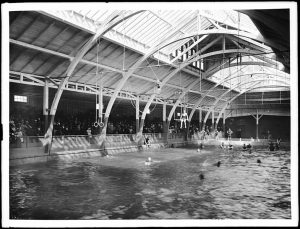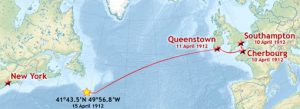Archival Moment
May Month
If you are shopping in May to replace an “old broom” you might want to consider the old English rhyme that goes:
“Buy a broom in May, and you will sweep your family (and friends) away.”
Some would even argue that one should not use a broom at all in May; the English rhyme for this superstition goes:
“If you sweep the house with broom in May, You’ll sweep the head of that house away.”
The origins of these superstitions have been lost but it is likely that the Newfoundland influence can be traced to 19th-century England in particular in Suffolk County home of the ancestors of many Newfoundlanders.
The superstition was also held by our Irish ancestors, they refused to make brooms during the month of May. It was the general rule in Ireland, to gather a stock of brooms, before May Day (1st May) in order that they should last through the month.
The broom has also taken on some considerable symbolic value.
The broom is often associated with woman and good housekeeping. As a result of the association, it was the practice that when a wife had been absent from home “longer than justifiable”, a broom, decorated with a ribbon, would be hung over the doorway, as an advertisement for a housekeeper.
The men also took advantage of the broom as a symbol. When the man puts out the broom, it is understood that he invites his friends to carouse with him during his wife’s absence. Nowadays, it might be called an invitation to a shed party!!
In Newfoundland, P.K. Devine, a journalist and a teacher, and one of the first important native Newfoundland folklore enthusiasts observed that boats were “broomed” to let people know that they were for sale. Instead of an advertisement in the local paper, the old “birch broom” used in sweeping the deck, was hoisted to the mast-head to let everyone in the harbor know that the schooner was for sale.
Making brooms was considered a noble profession and most towns had a small family business geared towards making brooms or a medium sized business that included the manufacture of brooms. The Directory for St. John’s in 1890 for example identified Robert Martin of 18 Duckworth Street and Joshua Mills of Kickham’s Lane as broom makers for the business of F & M Company. In rural Newfoundland certain fishermen because of their natural talent were identified as the “broom makers” and often made the brooms to support their meager income from fishing.
In the 1930’s and 1940’s a small Broom Industry was created at Her Majesty’s Penitentiary (HMP) manufacturing brooms that were sold in the shops of St. John’s and other towns. It is an art form that has now all but died.
With regard to the old English rhyme “Buy a broom in May, and you will sweep your family (and friends) away.” I tend to be a bit more relaxed in May month about house cleaning and absolutely no broom in sight!!
Recommended Archival Collection: The Rooms Provincial Archives: Broom Industry: GN 13. Dept. of Justice (1939-1948) 1 folder Box number, 106.
Recommended Reading: Admiral W.H. Smyth, 1788—1865, The Sailor’s Word-Book: An Alphabetical Digest of Nautical Terms (London: Blackie and Son, 1867)
Recommended Song: Lish Young Buy A Broom (Shanneyganock) with lyrics and video http://www.wtv-zone.com/phyrst/audio/nfld/30/broom.htm















